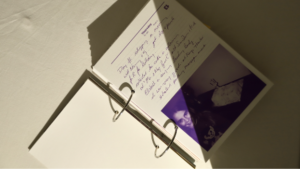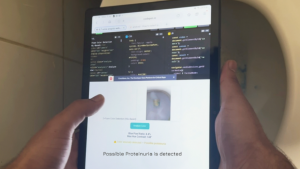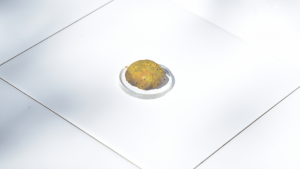Inspired by the statistic that one in seven women in the UK are diagnosed with breast cancer once in their lifetime and 31 die every single day, postgraduate students Shefali Bohra and Debra Babalola designed a device that aims to reduce deaths due to breast cancer by providing women with assistance to conduct self-checks at home.
One of Dotplot’s co-founders discovered an unusual knot in one of her breasts after a gym workout, and after approaching a gynaecologist for a clinical breast exam, she was advised to monitor the knot using her own fingers for a few months. Fortunately, the knot self-resolved, but the event catalysed the duo’s desire to build a tool that served as an at-home solution for the early detection of breast cancer.
The handheld device, which has a grip for users’ fingers and connects to an app using Bluetooth, uses sensing technology to help women conduct monthly breast exams, which are then converted into reports for comparison. During the self-examination, users will be guided on where to place the device, which will measure physical property quantities and convert them into readable signals, taking readings of breast tissue and any abnormalities.
The step-by-step description of how the Dotplot works on the James Dyson Award website is as follows:
“To use Dotplot, users are taken through one-time onboarding on the app which includes entering the details of their period cycle – if they have one – to offer the correct date for their self-check. They then build a personalised map of their torso by providing their bra size and breast shape and sliding the handheld device to rescale the baseline model.
Once set up, the app guides women through the self-check by showing which areas they need to scan. The position of the device on the torso is determined by Dotplot’s pre-trained system which analyses the orientation of the device relative to the ground. A sound signal of a known frequency is emitted to record the tissue composition at the site. The point is that the user needs to check flashes on the app until a reading has been taken. Each month's reading is compared to the previously recorded readings to highlight any abnormalities developing in the tissue. Users can choose to send reports directly to their GP.”
Dotplot was recently awarded the UK National prize in the 2022 James Dyson Awards, progressing to the international stage, where they stand a chance to win the overall prize, which will be announced on 16 November. The James Dyson Awards, named after the engineer and inventor behind Dyson’s revolutionary products, celebrates budding engineers and designers from across the world.
Babalola and Bohra hope to develop the device further to be able to apply the technology to allow for early detection of other cancers and illnesses, including testicular cancer and soft tissue sarcoma.
Read more:
These designers are merging tech and product design for more inclusive products.
Tackling sanitation taboos with panache.
Credits: Dotplot







